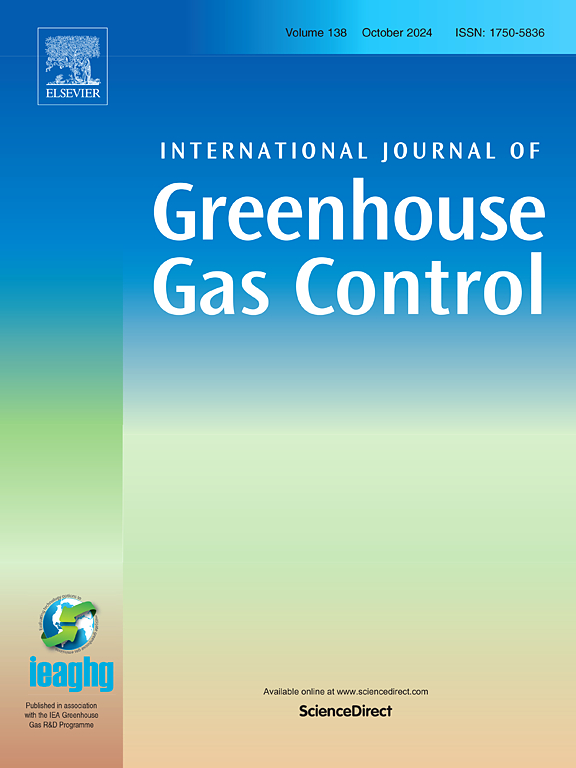Assessing the geological storage capacity of CO2 in Khorat Sandstone: Geochemistry and fluid flow examinations
IF 4.6
3区 工程技术
Q2 ENERGY & FUELS
International Journal of Greenhouse Gas Control
Pub Date : 2025-02-01
DOI:10.1016/j.ijggc.2025.104322
引用次数: 0
Abstract
To achieve a gigaton-scale CO2 geological storage, several sedimentary formations are widely assessed for their potential for dedicated storage projects. As one of the large formations in Southeast Asia, the Khorat Plateau in Thailand is of significant interest. While previous studies have reported discrepancies in the capacity estimate, effective capacity considering experimental examination is needed to properly elucidate project development in the area. In the current study, geochemistry and CO2-brine flow were experimentally examined using samples of Khorat sandstone. Owing to CO2 geochemical reactions coupling with flow-induced fines migration, dissolution-precipitation of the sample minerals at sub-core scales were intricate and led to changes in core-scale properties as a result. After the samples were exposed to CO2-saturated brine, quartz likely dissolved while calcite precipitated. At the core scale, permeability declined due to residual clay blockage. On the contrary, after supercritical CO2 exposure, the minerals were severely dissolved, which led to the expansion of pore networks and increases in porosity and permeability. Relative permeabilities of CO2 and brine were characterized, and the residually trapped amount of CO2 was obtained (26% of pore volume). The storage capacity was calculated to be 9.66 kg/m3, which was found to be relatively less influenced by the geochemistry-induced physical alterations.

求助全文
约1分钟内获得全文
求助全文
来源期刊
CiteScore
9.20
自引率
10.30%
发文量
199
审稿时长
4.8 months
期刊介绍:
The International Journal of Greenhouse Gas Control is a peer reviewed journal focusing on scientific and engineering developments in greenhouse gas control through capture and storage at large stationary emitters in the power sector and in other major resource, manufacturing and production industries. The Journal covers all greenhouse gas emissions within the power and industrial sectors, and comprises both technical and non-technical related literature in one volume. Original research, review and comments papers are included.

 求助内容:
求助内容: 应助结果提醒方式:
应助结果提醒方式:


